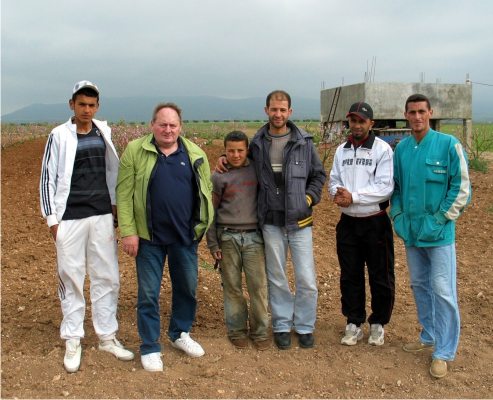Interview
with
Joseph
Mangelsdorf,
the
Algerian Sloughi
May 20 2010
© de Caprona
2010
Copyrighted
material.
Do
not
use
text or photos for any purpose without asking. We
will follow up on plagiarism.
Dominique
de Caprona:
Mr. Mangelsdorf, you are in Algeria at the moment, a country difficult
to go to. As you know, the Algerian Sloughi has been the best described
and the most well known since the 19th century in Europe, particularly
thanks to the description the General Daumas gave of it in 1852. I
would
then like to take advantage of your stay in that country to ask you to
tell us what you have been able to see of this ancient breed 158 years
later.
Which are the
regions you
have travelled to and seen Sloughis?
Joseph
Mangelsdorf:
Chronology
From 1977 to 1980, I
stayed
in Tlemcen and travelled to Taghit (Colomb Béchar); I had seen
few
Sloughis except a few populations with the nomads at Sebdou,
south
of Tlemcen. From these nomads I had received as a gift my first
sloughi,
Anthar, whom I had brought back with me to Germany, where he has lived
for 12 years:
From 1980 to
1983,
a stay in Souk Ahras, with trips towards Gardaia; few Sloughis.
A few populations in
the
region of Biskra.
From 2005-2008, a
stay in
El Kala. Because of the country’s insecurity at the time, no trip was
possible,
and I have not seen Sloughis in that region.
Since January 2010,
I have
stayed in Tiaret and I went several times to the region of Tlemcen,
where
I found the presence of numerous Sloughis North of Tlemcen (in
particular
Bensekrane and Sidi Abdelli)
According to what
the inhabitants
of Bensekrane say, there is also a population of these dogs in Tiaret
which
I am planning to visit soon.
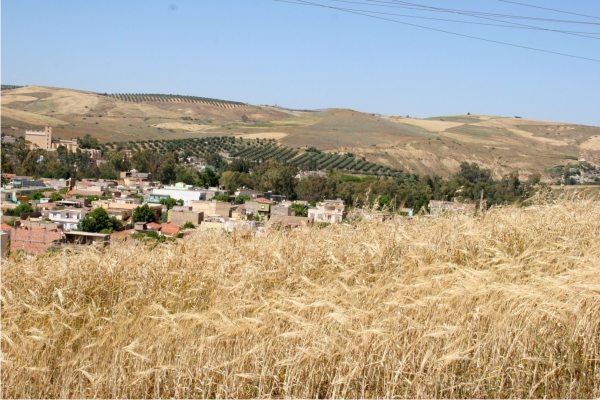
Bensekrane
©
Mangelsdorf 2010
Hunting grounds in
the back
on the hill.
Dominique
de Caprona:
How were you able to establish a contact with the owners of Sloughis?
Joseph
Mangelsdorf:
In Algeria, it is difficult for Westerners to have access to the
Sloughis
and their owners. One needs to be very tactful, establish a
relationship
based on a deep trust and above all, one needs to respect their
traditions
and the way they treat their dogs.
Dominique
de Caprona:
About how many Sloughis have you seen there?
Joseph
Mangelsdorf: In
the region of Bensekrane alone, there are more than 100 Sloughis.
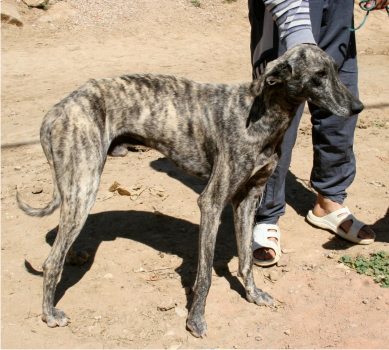
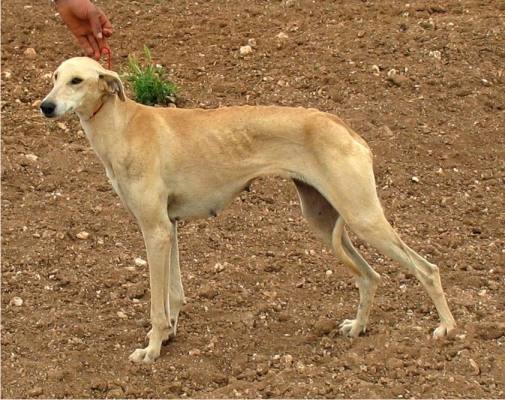
Bensekrane
©
Mangelsdorf 2010
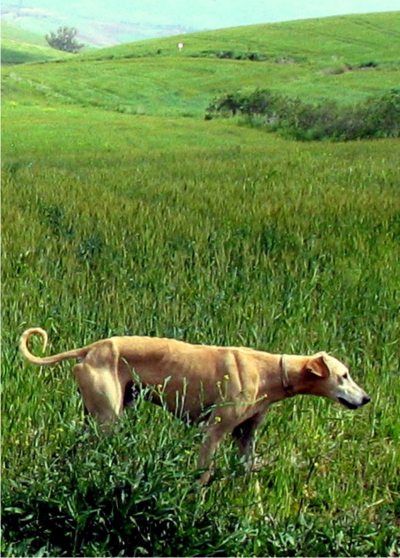
Dominique
de Caprona: To
whom do the Sloughis belong in that region?
Hunters, farmers….?
Joseph
Mangelsdorf:
The Sloughis has belonged to the inhabitants, without discrimination,
for
generations;it is tradition.
The best Sloughis
are with
the hunters
Dominique
de Caprona: Which
is the main function of the Sloughi in that region?
Hunting, guarding…?
Joseph
Mangelsdorf: Hunting
and guarding sheep herds against night attacks by jackals; the
inhabitants
possess a Sloughi also "for the honor”, and a bit for the social
“standing”.
For hunting they use
a smaller
Sloughi. The tallest Sloughis are used to guard sheep herds.
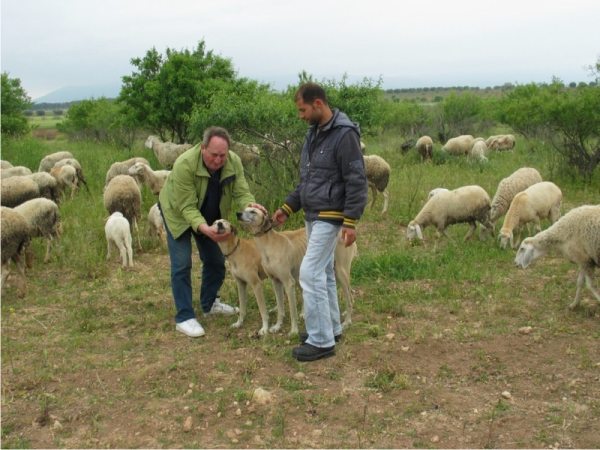
Two Sloughis
protecting
a sheep herd, Bensekrane © Mangelsdorf 2010
Dominique
de Caprona:
How do Sloughis live in Algeria, free, tethered, confined?
Joseph
Mangelsdorf:
In partial liberty, usually in makeshift set-ups with the possibility
of
going out.
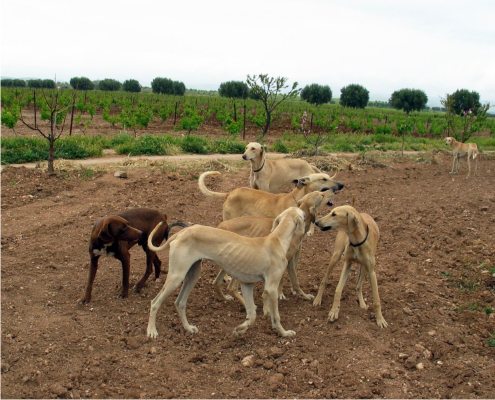
Sloughis playing in
the
company of a Pointer type dog. Bensekrane © Mangelsdorf 2010
Dominique
de Caprona: Which
are the coat colors that you could see? Do the Algerians prefer
certains
colors over others or not?
Joseph
Mangelsdorf:
All the colors from black to white through red fawn. The Algerians have
no preferences for colors. Above all, they do not know the importance
of
our standard; for them, the only selection criteria are the speed and
courage
during hunting.
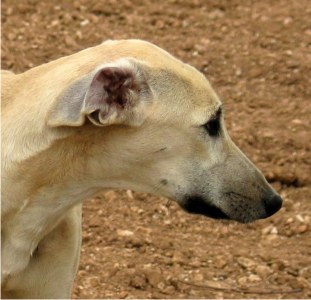
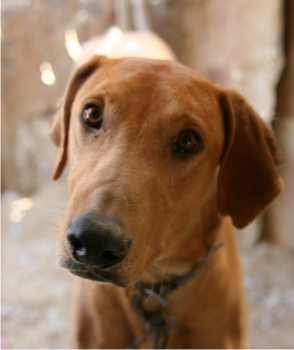
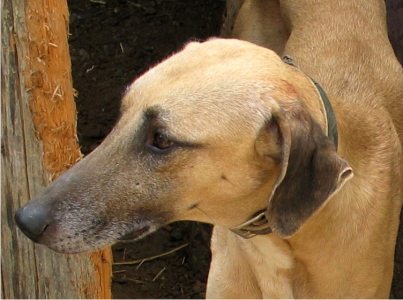
Bensekrane ©
Mangelsdorf
2010
Dominique
de Caprona:
Which is the most important characteristic of the Sloughi for the
Algerian
owner?
The temperament, the
hunting
talent, the fact that he is a good guard dog..etc…?
Joseph
Mangelsdorf: The
speed and courage when facing game, especially the jackal and the wild
boar.
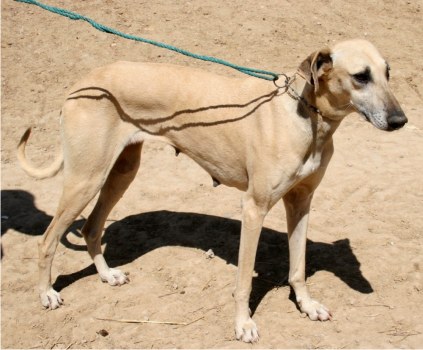
Sloughia of great
renown
for her courage during hgunting © Mangelsdorf 2010
Dominique
de Caprona: Could
you describe for us a little the temperament of the Sloughis you have
encountered?
Which was the typical demeanor?
Joseph
Mangelsdorf: The
Sloughis are very reserved, they have no interest whatsoever in
strangers.
They are calm, attentive, they listen only to their "master." Commands
are given with whistles or little sounds made with the fingers or the
mouth.
I have not seen fights among them, they accept other animals except
cats.
I have not noticed any rank order. They are not aggressive, they are
gentle
and seem nice. All in all, the perfect dogs.
Dominique
de Caprona:
How are the Algerian Sloughis fed? In the Western World, there are many
discussions about how to best feed a Sloughi, and I personally think
that
oftentimes they are given a food which is too rich.
What do you think?
Joseph
Mangelsdorf:
The Sloughis are fed with leftovers of meals (without strong spices).
In
Bensekrane there is a chicken slaughterhouse, the hunters collect (for
free) giblets and leftovers, in particular heads and legs. For the
hunters
it is the best food for Sloughias with puppies. The leftovers are eaten
raw by the Sloughis.
In any case the
people do
not have the means to feed them any other way.
Dominique
de Caprona:
When do Sloughias have their litters?
Joseph
Mangelsdorf
: Because of the climatic conditions, during the months of
April
and May.
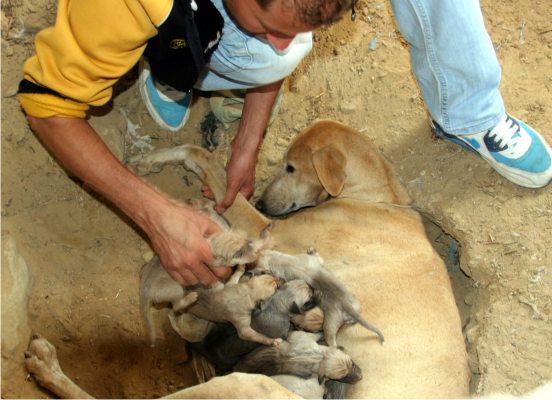
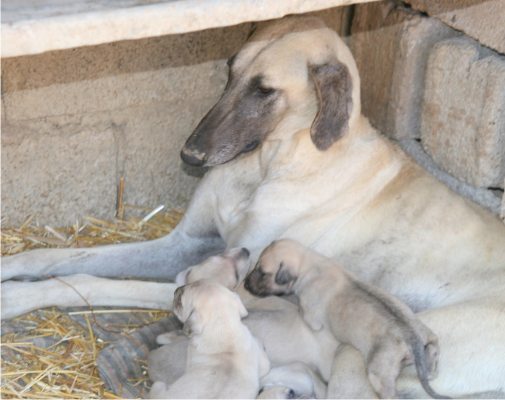
Two lovely Sloughi
litters,
Bensekrane © Mangelsdorf 2010
Dominique
de Caprona:
What is the life expectancy of a Sloughi in Algeria?
Which are the main
reasons
which end the life of a Sloughi prematurely?
Joseph
Mangelsdorf:
The life expectancy is, roughly, of 4 years, mostly due to the lack of
means to buy medicine and vaccinate the dogs.
(For information: a
vaccination
costs 5,00 Euros).
Dominique
de Caprona:
Are there traditions such a brandmarks on the front legs or markings
with
Henna on various parts of the Sloughi’s body, in the region which you
have
visited?
Joseph
Mangelsdorf:
Brand marks on the legs, no, Henna on the head and legs, yes, to
decorate
the Sloughi and make him beautiful. It is also a symbol of the
Sloughi’s
strength.
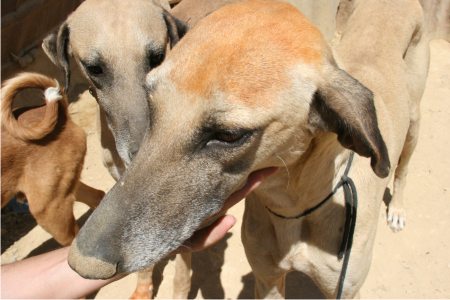
Henna on the front
leg of
a Sloughi and on the head of another
Bensekrane ©
Mangelsdorf
2010
Dominique
de Caprona:
Are there Algerian legends about the Sloughi?
Joseph
Mangelsdorf:
One tells each other stories about the courage of Sloughis facing wild
boar and jackal during hunting or guarding of sheep herds..
Dominique
de Caprona:
What do you think of the current situation of the Sloughi in the region
where you find yourself?
I imagine that the
owners
of Sloughis are very proud of their dogs. In your opinion, are there
reasons
to be optimistic regarding the survival of this breed in that country
of
origin?
Joseph
Mangelsdorf: In
the region of Tlemcen and in Algeria, there are no survival problems
for
the breed Sloughi.
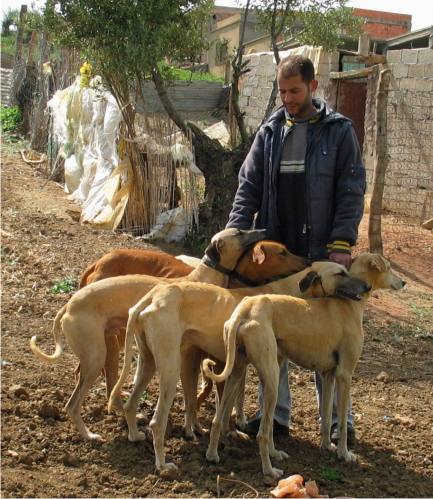
A proud owner of 4
gorgeous
males
Bensekrane
©
Mangelsdorf 2010
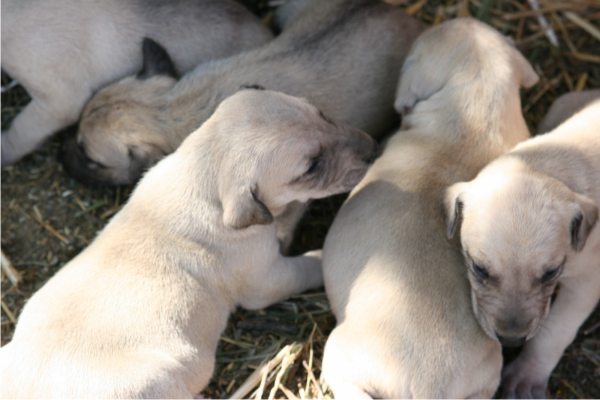
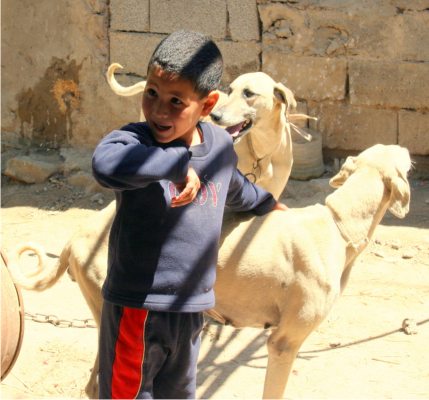
The future of the
breed,
Bensekrane © Mangelsdorf 2010
Many thanks to
you, Mr Mangeldorf,
as well as to your Algerian friends, for presenting the Algerian
Sloughi
to us.
